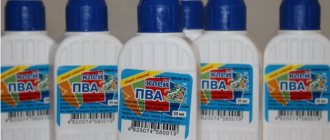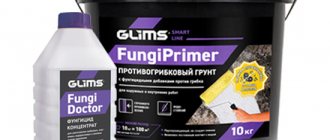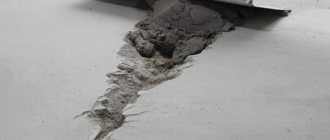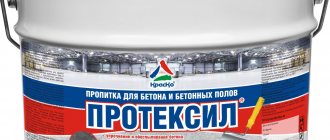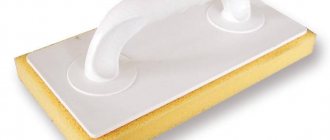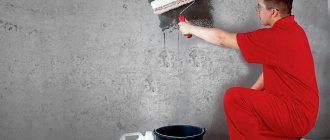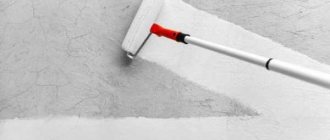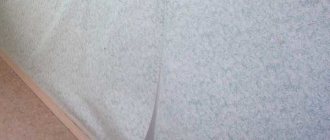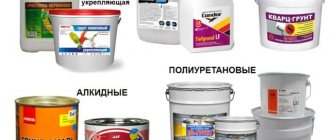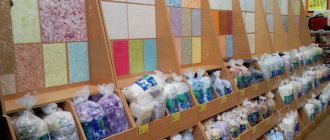Icer
12474 0 13
Icer January 30, 2017 Specialization: master in the construction of plasterboard structures, finishing work and laying floor coverings. Installation of door and window units, finishing of facades, installation of electrical, plumbing and heating - I can give detailed advice on all types of work.
In the photo: compositions with quartz filler can improve the adhesion of any smooth surface
In order for the finish to adhere well to smooth substrates, they must be properly prepared. A quartz primer is best suited for these purposes. But to achieve a good result, it is worth choosing the optimal composition and applying it correctly. It is these aspects that we will examine in this review.
Primer with quartz sand can be used both inside and outside buildings
Most often, adhesive compounds are used on concrete bases
Purpose and application
Quartz primer is designed to improve the adhesive properties of the material. The mixture is ready for use on base materials of a certain composition as a tight connection of various structural coatings. Another well-known name for the mixture is concrete contact. Although in some cases the composition may differ. The main property is to increase the strength of the connection of plaster with other base surfaces. When treating walls made of reinforced concrete, ceramic block and other components with reduced absorbency, the adhesion of subsequent layers and finishing increases.
Conclusion
From the review, you learned how quartz primer is selected and how to apply it correctly. All you have to do is use the information in practice and properly prepare the surfaces for finishing. The video in this article will help you understand some of the nuances even better. If you have questions or clarifications on the topic, write them in the comments at the bottom of the page.
Did you like the article? Subscribe to our Yandex.Zen channel
January 30, 2022
Construction Chemicals, Dry Construction Mixtures
If you want to express gratitude, add a clarification or objection, or ask the author something, add a comment or say thank you!
Composition and technical characteristics
The functional characteristics of soil with quartz are determined by the composition of the mass. In some cases, the solution is used as an addition to the topcoat to create an original decorative pattern. In such cases, it is allowed to use special additives with coloring substances to achieve a certain color range. Quartz soil differs from other working materials in the following content:
- acrylic, latex or acrylic-latex components that hold the mixture on a wet surface;
- elements with bactericidal and fungicidal properties that prevent the development of mold and mildew in rooms with high humidity;
- resins to give the solution a uniform consistency;
- coloring components in the form of titanium dioxide, so that a primer can be used for finishing work.
The base is a water-dispersion base with the addition of fine-crystalline sand.
What it is
Before us is a typical adhesive primer. It is called quartz due to one of its components – fine quartz sand. Other soil components may vary; however, it should be noted that all primers of this type present on the Russian market are water-dispersed.
What does this mean in practical terms?
- Completely harmless – both during the operation of the finished surface and at the stage of applying primer.
- The use of quartz primer is possible only on wetted surfaces. It is useless to prime aluminum, polished stainless steel or plastic.
Depending on the other components, the soil may have different sets of additional functions.
- The addition of fungicides gives the composition antiseptic properties and helps prevent the appearance of fungus.
- An aqueous dispersion of acrylic resins penetrates deep into the base and strengthens it, preventing the top layer from falling off.
Peculiarities
Quartz, when dried, gives walls a rough structure that firmly holds ceramic tiles, putty and plaster. If during the repair process it is necessary to apply a thick layer of finishing material, use a special mesh. The amount of mixture required to treat walls exceeds other solutions. However, a single application of a layer improves the functional characteristics of surfaces after coating.
Important! Proper application of quartz sand primer helps create a strong base and reduce the use of other materials.
Consumption per 1 m2
A particularly good effect is observed when covering smooth and porous walls with quartz soil. For such coatings, the instructions require applying a thick layer with a diameter of up to 2 - 3 cm. However, this method is justified, given the creation of a strong base with a high degree of adhesion. In most cases, a single application is sufficient. This helps save on other types of finishing materials.
The average consumption rate of soil with quartz per square meter ranges from 0.2 to 0.5 kg. A more accurate amount can be found if you cover a wall with an area of 1 m2. The amount of material depends on the initial characteristics of the base surface and its quality, as well as on the type of primer.
What is mineral plaster
For many site visitors it will be a complete surprise to learn that mineral decorative plaster appeared in Ancient Rome. But what about cement, one of the main components of the solution? He appeared several centuries later. Everything is explained simply: along with lime, the Romans mixed volcanic ash (pozzolans) and crushed baked clay. What about today?
Composition and characteristics
Modern mineral plaster appeared in 1893, when one of the German factories produced a product for finishing walls from white Portland cement, lime and quartz sand - essential parts of the mortar. Subsequently, marble or granite chips, as well as various additives (light mineral fillers and hydrophobic substances), began to be added to the mixture. The full list of additives includes:
- chalk;
- vegetable emulsifier;
- talc;
- kaolin;
- polyaspartic acid;
- polymerized (standol) safflower (safflower – plant) oil;
- cellulose;
- methyl cellulose;
- titanium dioxide;
- benzisothiazoline.
The question immediately arises: what is the connection between the mineral plaster of antiquity and modern one? They have one thing in common - they contain oxides: silicon SiO2, aluminum Al2O3 (alumina) and iron Fe2O3. It is these chemical compounds that are responsible for the adhesion of the plaster to the wall and the hydration of the solution (stone formation).
This type of decorative plaster got its name because of the natural and environmentally friendly materials used in its production. Available in dry form. Packaged in paper bags of 15 and 25 kg.
For mineral decorative plaster:
- density 1.4-1.5 t/m3 (bulk);
- the consumption of dry mixture per 1 m2 ranges from 0.9-1.5 kg (depending on the diameter of the fillers - the larger it is, the thicker the plaster layer will be). For example, with a grain size of 2-3 mm, the layer thickness will be 2-3 mm, and the consumption will be in the range of 1.0-1.2 kg;
- excellent adhesion with a plaster layer thickness of up to 3 cm;
- the ability to maintain plasticity after stirring the solution for 1.5-2.0 hours;
- water consumption for a package weighing 25 kg is 4.8-5.5 l;
- good thixotropy (applied without smudges);
- sufficient vapor permeability (Sd < 0.1 m);
- hydration (setting) takes place at a positive air temperature in the range of 5-25oC;
- Drying time – 16-24 hours.
Life time
Mineral-based decorative plaster has a service life of about 10 years, which is due to the lack of elasticity of the finish. It cracks from vibration and the slightest shrinkage of buildings. Even strong slamming of entrance doors leads to the formation of microcracks. The only good thing about this situation is that mineral plaster for facades can be repaired.
It is possible to restore damaged areas inside buildings, but here it is almost impossible to hide traces of repair - it is difficult to choose the color scheme of the new layer in relation to the old one and to ensure that the texture matches the old plaster.
Suitable areas of use
Due to the functional characteristics of quartz primer, experts recommend using this primer option in the following situations.
- When performing finishing work on surfaces with significant defects and cracks, when it is not possible to level the walls with other materials.
- To save plaster, which will be used for subsequent application of some of the surfaces of the room.
- For the purpose of processing coatings made of monolithic concrete, wood-based materials and plasterboard, solutions, including acrylic primers.
- To create a transparent layer that is provided by a sodium silicate based primer.
- In some cases, a quartz mixture is used to perform facade work in private homes.
- As a preservative for wall coverings for the winter.
- For fixing a layer of external thermal insulation on an adhesive basis.
When using quartz soil, it must be remembered that the main condition for long-term operation is complete drying of the mixture.
Attention! Failure to comply with humidity and temperature indicators will reduce the service life of the coating.
What types of textured plasters are there and how to work with them correctly?
Textured plaster is an original solution, the implementation of which requires special tools and knowledge of special technological techniques.
Popular textured finish options:
- Sgraffito. In this case, two or more solutions of different colors are needed. First, the main plaster layer is applied, then the top coats of color. On the weak upper layers they work with special tools - spatulas, chisels. With their help, the top layer(s) are cut off or scratched from the surface. In this way, a relief color pattern is created.
- Venetian. The fine-grained composition of “Venetian” allows you to obtain an ideal finishing layer, creating imitations of onyx, marble and other natural stones. The coating is multilayer; stainless steel tools are used to create it. The material has a translucent structure, so the lower layers shine through the upper ones, creating a mysterious effect of depth. After application, the “Venetian” is left for several days to complete the chemical processes, as a result of which a very durable film is formed on the surface.
- Coating with craquelure effect. Craquelure is cracks in the paint layer, which are obtained using special compositions and special technological techniques. The purpose of their creation is to imitate an aged surface. White or black walls with cracks in silver and golden shades look beautiful. The craquelure effect is obtained by successively applying acrylic paint, which will be visible in the cracks, and a special plaster mixture. Some plasters will crack at room temperature, while some need to be heated with a hairdryer.
You can create textured surfaces using hard brushes and combs, as well as by the touch-off method (trimming). To carry out the last technical technique, the trowel is placed on the freshly laid mortar and then torn off from it. The result is protrusions that can later be shaded with a semi-dry sponge. The relief is also obtained by rolling with a roller with a shaped surface or shaped pile. Another option is to simultaneously apply mixtures of different colors, which allows you to obtain complex color combinations or a gradient transition of shades of the same color.
Advantages and disadvantages
The soil that contains quartz compares favorably with other finishing mixtures due to its characteristics. They are represented by the following advantages:
- environmental friendliness and cleanliness;
- absence of harmful effects on the human body during coating and during operation;
- a variety of options - with fungicides, acrylic resins and other components;
- quick drying;
- resistance to changes in atmospheric parameters - pressure, temperature;
- Possibility of combination with decorative coatings, such as Rolplast Verjilium 3 kg or aquarium primer - black quartz.
However, there are some restrictions on application, which include:
- the impossibility of covering dry surfaces - it is necessary to pre-treat the walls with water so that they are wet;
- It is not recommended to use quartz mixture for polished materials, polymers or glass, given the poor adhesion - there is a possibility of decorative elements peeling off;
- When exposed to direct ultraviolet radiation and constant humidity, the mixture may crumble.
Requirements for puttying
After plastering, any internal and external surfaces are puttied. The composition of the putty is also selected according to the degree of its affinity with the plaster material.
An important parameter that determines the durability of decorative plaster is the compliance of the selected primer with it. Otherwise, after priming, partial or complete peeling of the plaster composition may occur. In order not to run into such trouble, you need to avoid using putties that contain highly viscous substances that have little absorption (for example, oil putties, alabaster-based putties, adhesives).
Varieties of primer compositions with quartz sand
Construction stores offer various options for soil with quartz sand. They differ in composition and technical characteristics. Each package is accompanied by instructions that reflect the scope and rules for applying the solution depending on the properties of the base surface. However, the following main types of mixtures containing quartz are distinguished.
- Suspension based on synthetic resins. has a high degree of safety, given the absence of chemical solvents;
- suitable for walls with a smooth finish;
- it is possible to add colored pigments, which makes it possible to use this type of primer for decoration;
- can be used for internal and external repairs;
- the optimal setting temperature is about +20 degrees - in such conditions 3 - 4 hours is enough.
- is resistant to fluctuations in atmospheric parameters;
Important! The consumption of quartz soil in the above options ranges from 200 to 500 grams per 1 m2.
- Mixture with silicate base: penetrates well into small pores and cracks up to 0.3 cm in size;
- suitable for rooms with high humidity, which allows the solution to be used in basements and basements;
- you can use colored pigments to decorate walls;
- application is allowed at a temperature of at least +5 degrees with varying degrees of humidity;
- long drying period - about 12 hours;
- increased mixture consumption - from 400 to 600 grams;
- high cost of the solution.
A variety of soils with quartz allows you to choose the appropriate option for repair.
How to choose soil
Let's look at the main types of primer solutions and their features:
- Universal. This acrylic-based material can be used on any surface except wood and metal. The composition of this primer provides increased adhesion, improved strength and protection against mold (if the composition contains the appropriate additive). Dries quickly and has no unpleasant odor.
- Deep penetration. This impregnation is used mainly on loose and crumbling plasters. Penetrating deeply into the pores, the solution slightly strengthens the wall and increases its water-repellent properties. This material dries quickly and does not have a strong odor.
- Adhesive soil type concrete contact. It allows you to significantly improve the adhesion of materials due to quartz sand in the composition. After the primer solution dries, a rough surface with good adhesion is formed. This is required when leveling concrete walls with gypsum plaster, when gluing tiles to drywall, as well as when finishing smooth materials, such as fiberboard, OSB boards, etc.
These are the main three types of primers used for interior work to treat walls before plastering and puttying.
Tool preparation and application steps
The quality result largely depends on the primer coating technique. Therefore, planning finishing work should begin by carefully studying the instructions in order to know how to apply the solution correctly. Quartz-based soil has its own characteristics that must be taken into account during the work process. After calculating the amount of mass and purchasing it, you need to prepare the place for repairs and tools. It is important to ensure that you have:
- brushes or rollers;
- small brushes;
- stirring sticks;
- stairs;
- extension handles;
- safety glasses;
- special clothes.
The priming process is not difficult and consists of the following steps.
- Cleaning walls from old materials and dust - for this you can use sandpaper, a vacuum cleaner, or a damp cloth.
- Gently and thoroughly mix the mixture to evenly distribute the quartz particles. This step must be repeated regularly during application to ensure that the sand does not settle to the bottom of the container.
- After finishing the work, close the bucket with soil tightly.
- Allow the mixture with quartz to harden for 3 to 24 hours; it should dry well.
Properties
Depending on the type of material, its properties vary. The main task is to strengthen the foundation. At the same time, it perfectly prepares the base for plaster, for example, aerated concrete, concrete, brick, polystyrene foam, wood and gypsum surface, as well as expanded clay and cement. It is thanks to her that it is possible to apply decorative plaster at a professional level.
The primer contains film-forming components, resins and fillers. In most varieties it can be painted. This property allows you to see where the surface has already been processed. This criterion is important: the crystal lattice film must be homogeneous. Mineral mixtures contain cement, gypsum and lime. Primer:
- eliminates the possibility of excess moisture penetrating to the base;
- is an antibacterial composition (does not allow mold and mildew to develop);
- disguises the base, evening out its color, enhancing strength;
- depending on the composition, slightly levels the walls;
- helps increase fire resistance;
- hides stains on the treated surface.
The absorbency of the walls also matters: after treating it with a primer, the plaster mass will not be absorbed with double force. This will allow you to create any decorative pattern if it is intended by design. And it’s also easier to work with plaster on a primed surface: it lays flat, which reduces the time for finishing work.
Operating restrictions
Quartz soil has its own characteristics, which determine not only the area of application of the mixture, but also restrictions on application. Professionals do not recommend using the solution in the following cases.
- Only one type of primer is allowed in one room. Several types cannot be applied at once.
- Do not apply quartz mass to plastic and metal materials. This is due to the lack of absorbency of such surfaces. After drying, the sand falls off.
- Direct sunlight on walls treated with quartz primer disrupts the structure and reduces the quality of finishing work. Once dry, the sand may flake off.
- The mixture can only be used to cover walls; a sand-based solution is not suitable for ceilings. Because if it is accidentally soaked in water, the primer will peel off.
- Do not apply the suspension in conditions of high humidity.
- In frosty conditions and at ambient temperatures above + 30 degrees, it is better not to use quartz soil. Because it is impossible to calculate how long the solution will take to dry.
Types of mineral plaster
There are 4 classification factors by which the type of plaster mixture is determined. This:
- area of application of the mixture;
- type of decorative filler;
- fraction or grain size of the main filler;
- textured structure and appearance.
As already mentioned, in terms of application, plaster compositions can be intended for interior and exterior work.
Type of decorative filler
The properties and appearance of fillers used for mineral plaster vary significantly, so their use depends on what effect needs to be achieved.
Marble chips are one of the most common materials and are considered a classic filler for decorative plaster compositions. It strengthens the surface structure and gives it a beautiful, respectable appearance.
Colored clays are the second most popular material for filling plaster mixtures. Their addition to the composition of the finishing material allows you to obtain smooth and textured wall surfaces of various colors and shades.
Ceramic chips are small waste from the production of expanded clay granules. They give a beautiful decorative effect when finishing a wall for subsequent painting. However, they are rarely used due to the complex process of preparing mixtures.
Crushed quartz or sand of large fractions makes it possible to obtain the cheapest plaster with a beautiful texture. The additional addition of pigment or color length eliminates the need for finishers to subsequently paint the surface.
Small glass beads are one of the most original fillers that can give walls a very beautiful and impressive look.
Fine anthracite or other crushed coals are used to produce dark-colored plaster. Coal compositions are not very expensive, but they are rarely found on sale, as they are not in great demand.
Mica is used as part of mineral facade plaster for exterior work. This is due to the fact that mica particles look beautiful in the sun.
Fraction or grain size
Based on the fraction of filler grains, 5 types of mineral decorative plaster are distinguished:
- Fine-grained, with a maximum particle size of no more than 0.5 mm. Ground colored clays are used as fillers for such compositions. The surface is almost perfectly smooth.
- Fine-grained, with granules 0.5-1.0 mm. Most often used for finishing residential, commercial and public premises. The texture has a barely noticeable relief.
Medium-grained, with filler particles 1.0-3.0 mm. The most popular material for finishing building facades. For interior work, it can be used in corridors, halls and in rooms with high humidity.
- Coarse-grained, with a granule size of 3.0-5.0 mm. Most often used for external plastering of walls, plinths and stairs. For interior work it can be used for plastering non-residential and work premises.
- Coarse-grained, with filler more than 5.0 mm for outdoor use.
The size of the granules largely determines the thickness of the plaster layer and the final appearance of the coating. Therefore, when selling a ready-made dry mixture, the grain fraction of the filler is always indicated on the packaging.
Texture and appearance
The most popular decorative plaster textures include the following types:
- “lamb”, in which small mineral granules cover the wall in a continuous layer, forming a structure similar to the skin of lamb;
- “bark beetle”, when the mixture contains relatively few large pebbles, which, when pulled with a grater, form longitudinal or vertical stripes, similar to the burrows of a bark beetle;
- “fur coat”, with a fine-grained filler fraction, having sharp-angled tubercles on the surface;
- “Venetian” - a surface with a marble finish as a result of mixing with colored clays;
- “wet silk”, in which cotton, cellulose or silk fibers are used as filler;
- “travertine” with a surface imitating natural stone with relief processing.
Nuances and tips
When working with quartz soil, there are certain nuances that both beginners and experienced craftsmen should remember.
- You cannot use spray bottles to apply the solution, because small particles of the suspension will clog the holes of the spray gun.
- The best time of year for repairs is summer, given the optimal climatic conditions for drying the mixture.
- Do not treat frozen walls - when thawing, excess moisture will destroy the soil layer.
- You can dilute the solution with water in an amount of 10% of the total mass.
On average, 10 liters of soil is enough to treat about 40 square meters of walls.
The Best Soil or Ideal Substrate for Succulents
A high-quality substrate for succulents will ensure the plant a long life without disease. Regular additional fertilizing, applied in small quantities, will maintain an optimal supply of nutrients in the soil.
It is important for flower owners to take proper care of them. It is necessary to observe watering conditions taking into account the time of year. Remember that succulents do not need moisture in winter. For active growth, the flower must be in a place with access to sunlight. In summer it is recommended to place it on the balcony.
It must be remembered that the natural environment for cacti is soil poor in nutrients. That is why you should not add excessive amounts of fertilizers, which contribute to the formation of nitrogen. This chemical has a detrimental effect on the plant.
It is enough to occasionally water the flower, add peat or humus. It is necessary to ensure that the soil does not become rough or acquire a rocky structure.
Before replanting, it is recommended to disinfect the soil. To do this, a mixture of earth and sand is fried in the oven for an hour. Drainage elements (brick chips and pebbles) are thoroughly washed under running water. After preliminary cleaning, they should be treated in a solution of potassium permanganate and dried.
A small container is suitable for most succulents. Young flowers can be replanted annually, choosing a pot that is 1-2 cm larger. Adult specimens do not require replanting more than once every 3 years.
Review of popular manufacturers
Specialized building materials stores offer the following options from well-known manufacturers.
- Cerezit CT-16 - used for finishing work inside and outside, can be applied to old paint.
- Alpina Expert is a universal mixture for surface treatment, including finishing building facades. It is characterized by high cost.
- OZON - produced specifically for thermal insulation systems. Good soil at an average price.
- GOODHIM GK is a cheap, universal mixture that is suitable for walls with old paint.
- BiTex - characterized by versatility; used not only for side surfaces, but also for ceilings and floors.
- Axton quartz soil is highly safe due to the content of organic components;
- Nevel gold highly covering quartz soil does not lose its active properties over five freezing cycles.
A wide selection of soils with quartz allows you to improve the quality characteristics of surfaces and increase their service life.
3.5 / 5 ( 2 voices)
